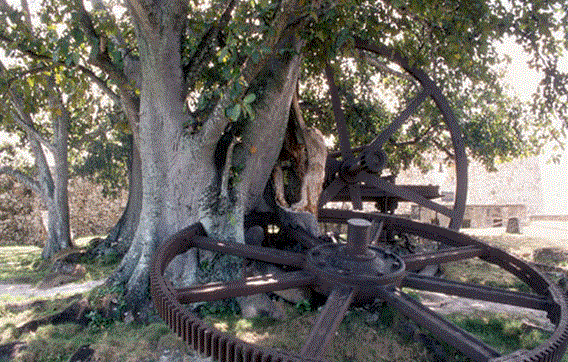 On December 10, 1868, Carlos Manuel de Cespedes liberated the slaves of his sugar center La Demajagua and invited them to join him in the fight for Cuban’s independence. The Cry of Yara was the beginning of the 10 Years’ War. These are the ruins of Demajagua.
On December 10, 1868, Carlos Manuel de Cespedes liberated the slaves of his sugar center La Demajagua and invited them to join him in the fight for Cuban’s independence. The Cry of Yara was the beginning of the 10 Years’ War. These are the ruins of Demajagua.
The great capitals of the Cuban economy were forged within the sugar industry. This last one and all its surrounding areas constituted a basic feature of the country’s culture, of its identity. 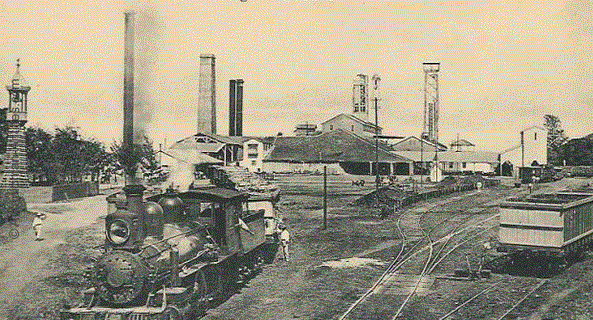 The formation of the Cuban nation is closely linked to sugar production in that it served to form a Creole aristocracy, which with the passage of time was differentiated from the Spanish mother country, still holder of political power on the island even while in the economic sphere it began to lag behind her thriving colony.
The formation of the Cuban nation is closely linked to sugar production in that it served to form a Creole aristocracy, which with the passage of time was differentiated from the Spanish mother country, still holder of political power on the island even while in the economic sphere it began to lag behind her thriving colony.
Such was the Cuban economic boom that the railroad arrived here before it did in Spain. And although perhaps core values were still lacking in the insular society, obviously the necessary base of capital equity was created in order to emerge as an independent nation.
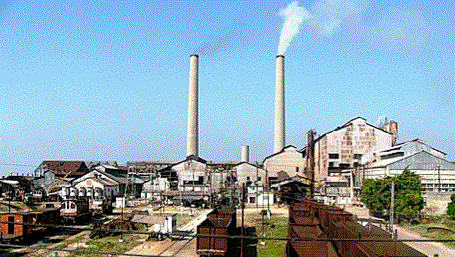 Cuba become on of the world’s principal sugar producers, and certainly one of the Latin American nations with the greatest density of railways. The industry was so strong that it survived devastating wars (rebel military campaigns razed sugar fields in order to destroy the Cuban economy as part of the Spanish empire) and later flourished when it declared itself a republic. In short, there were centuries of development that preceded the million-dollar harvests of the 50’s during the 20th century, which were the most profitable reported in the country’s whole history.
Cuba become on of the world’s principal sugar producers, and certainly one of the Latin American nations with the greatest density of railways. The industry was so strong that it survived devastating wars (rebel military campaigns razed sugar fields in order to destroy the Cuban economy as part of the Spanish empire) and later flourished when it declared itself a republic. In short, there were centuries of development that preceded the million-dollar harvests of the 50’s during the 20th century, which were the most profitable reported in the country’s whole history. 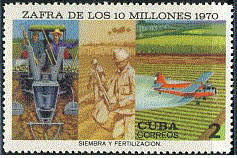 With the Revolution which shook all the country’s institutions in 1959 came the death sentence for the sugar industry which took some decades to execute. The centralized economy was the principal obstacle against which Cuba’s widest productive line had to fight, making this latter a loser.
With the Revolution which shook all the country’s institutions in 1959 came the death sentence for the sugar industry which took some decades to execute. The centralized economy was the principal obstacle against which Cuba’s widest productive line had to fight, making this latter a loser.
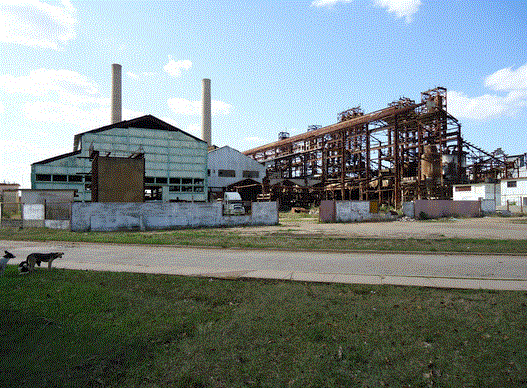 A fundamental part of this period is the Messianic nature of Fidel Castro who, without knowing enough about anything — except what is necessary for maintaining absolute power — proposed fantastical projects such as the “10 Million Ton Harvest ” which turned into a spectacular failure: not even 9 of the 10 million tons of sugar initially proposed were reached; besides, the price in the world market fell, and the cost of production was immense, converting the Harvest of the 70’ (as it is also known) into one of the most inefficient of all time.
A fundamental part of this period is the Messianic nature of Fidel Castro who, without knowing enough about anything — except what is necessary for maintaining absolute power — proposed fantastical projects such as the “10 Million Ton Harvest ” which turned into a spectacular failure: not even 9 of the 10 million tons of sugar initially proposed were reached; besides, the price in the world market fell, and the cost of production was immense, converting the Harvest of the 70’ (as it is also known) into one of the most inefficient of all time.
All that happened later resulted in the closure of almost all the sugar refineries at the national level, which was concluded at the beginning of the present century. Meanwhile, thousands of workers were fired, many communities turned into ghost towns and sugar for consumption began to be imported.
 It only took 50 years to dismantle a 100-year old industry, Cuba’s largest. As a contradiction, the price of sugar in the world market has risen during recent years, as has the price of products derived from it.
It only took 50 years to dismantle a 100-year old industry, Cuba’s largest. As a contradiction, the price of sugar in the world market has risen during recent years, as has the price of products derived from it.
Regrettably, the case in question has not been a lone example of the destructive legacy of Castro-ism. One need only go out onto the city streets to see the decay that covers everything. The Cuban economy is nothing on the world level, and the misery cannot become worse as it has permeated the soul of the Cuban nation.
Source: Bloqueo informativo al pueblo cubano, suplemento de La Nueva República
Translated by mlk.
12 January 2014

